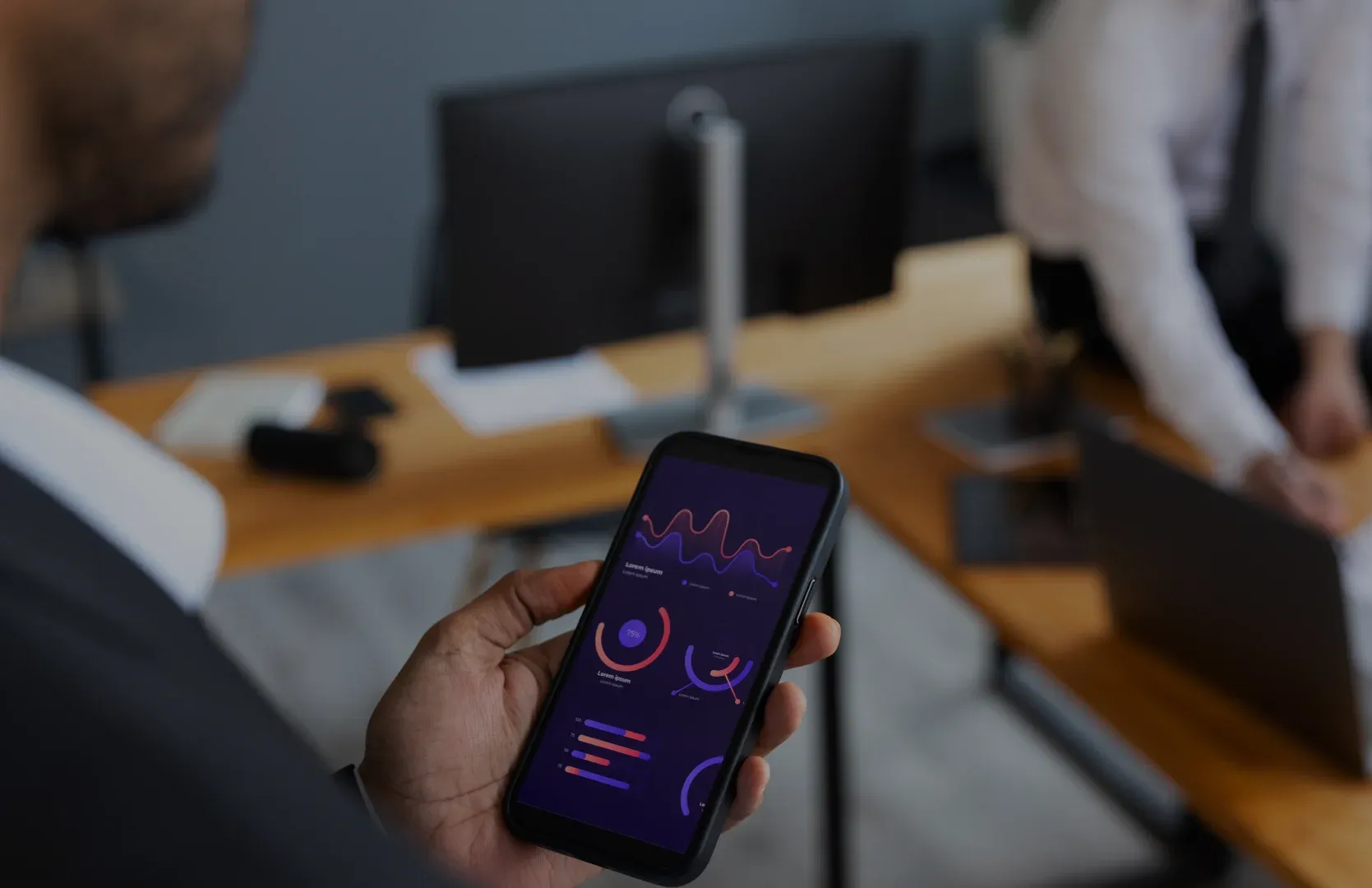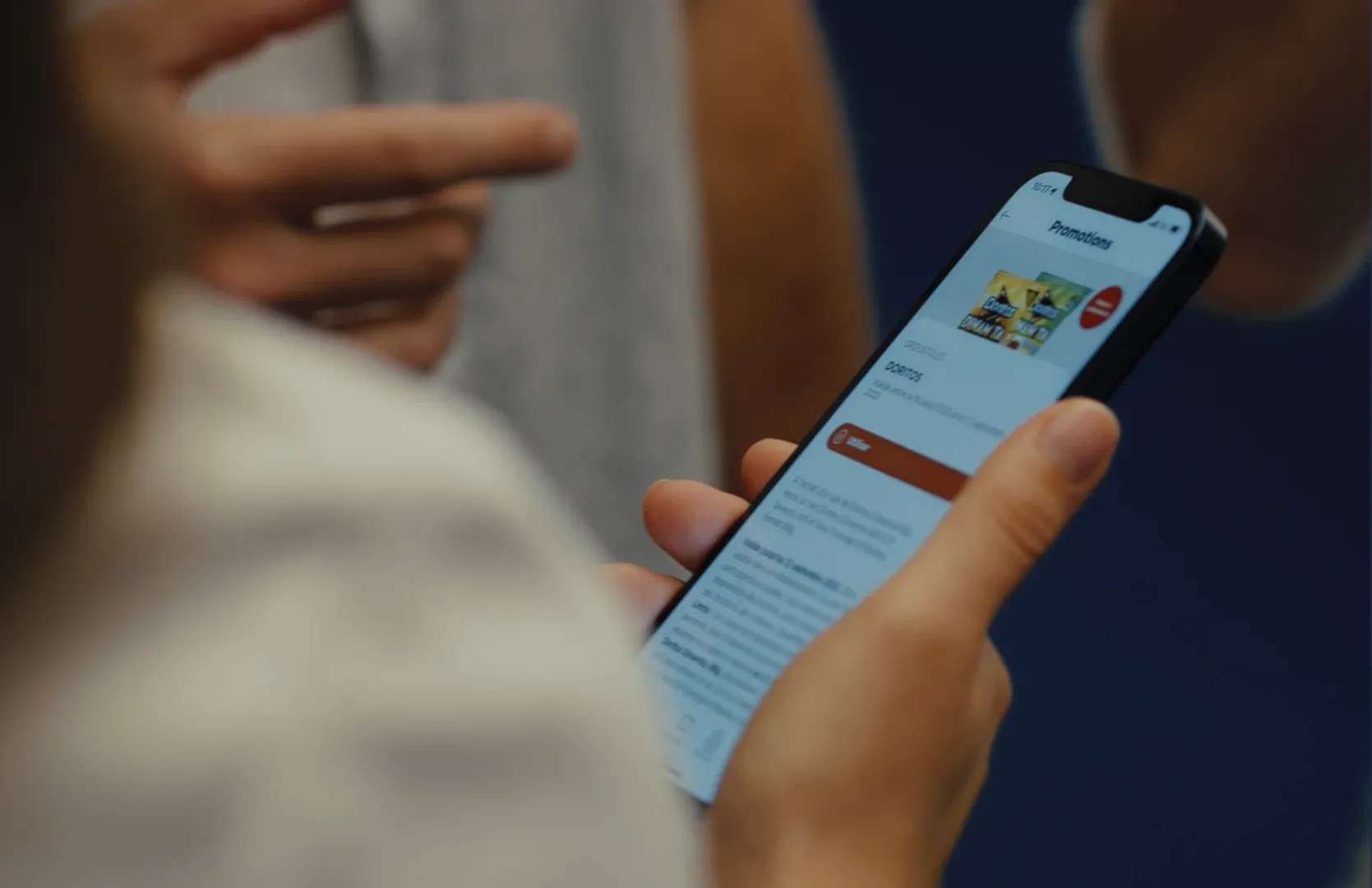
Push notifications can become one of the most powerful touchpoints in your mobile strategy.
3 Tips for Using Push Notifications Effectively in Your App
They’re often called intrusive, a source of digital fatigue — even counterproductive...
Yet push notifications remain one of the most powerful tools for driving mobile engagement. When well-designed, they allow brands to create timely, targeted interactions — a connection that would be nearly impossible without the ubiquity of mobile. They insert themselves into the user’s daily routine, right on the interface they consult most often: their phone.
But with the overwhelming volume of notifications users receive every day, it’s no longer enough to simply send a message. To truly make an impact, that message must be relevant, personalized, and well-targeted. In this article, we explore these three keys to success — with real-world examples from brands like Starbucks, Flo, and Nike Run Club — and how to measure their effectiveness.
1. Relevance: The Right Message at the Right Time
A notification shouldn’t feel like a disruption. To catch the user’s attention and drive action, it needs to arrive at the right moment and in the right context. That’s what gives it value and legitimacy — and helps avoid long-term fatigue.
Starbucks is a great example: the brand sends geo-targeted notifications when users are near a store, delivering offers when they’re most likely to act on them. Uber Eats follows a similar strategy, sending messages around mealtimes based on each user’s behavior patterns.
On the technical side, this involves connecting your app to iOS and Android geolocation APIs, using a mobile SDK that can handle context-based triggers, and configuring your push system to exclude certain time slots. A well-designed backend also allows you to align notifications with real-time events (like an active promotion or weather conditions that support an offer).
It’s essential to rely on contextual data like location, time of day, or live events — and avoid untimely messages that risk irritating users instead of engaging them.
2. Personalization: A Message That Speaks to the Individual
Users expect messages that reflect their reality. Sending the same content to everyone is like shouting into the void. A well-personalized notification makes the user feel that the app understands their needs and is helping them accomplish something.
A great example is the Flo app: its notifications are tailored to each user’s menstrual cycle, preferences, and health goals. These messages deliver real value and are seen as a service, not a disruption. Duolingo also shines in this area by adjusting notifications based on each user’s learning level and activity, striking a balance between motivation and intrusion.
From a technical standpoint, personalization relies on collecting and centralizing data — always with explicit user consent. A backend system synchronizes profiles, behaviors, and usage contexts in real time. A rule engine or segmentation tool then generates dynamic content tailored to each situation. Some platforms let you embed personalized variables directly into notification templates — first name, location, browsing history, time of day, etc. AI and machine learning add a predictive layer, refining recommendations and triggering the right message at the right time on the right channel.
3. Prioritization: Focus on the Users That Matter
Blasting your entire user base with the same notification risks irrelevance — or even irritation. Focusing instead on the users most likely to engage helps reduce marketing pressure while maximizing ROI. In other words: invest where attention is available and action is most likely.
A strong example is Sephora, which combines purchase data, stated preferences, and in-app behavior to send ultra-targeted notifications. A beauty routine reminder might be sent right before a product runs out — just in time to drive action. This approach maximizes impact while avoiding unnecessary noise.
Technically, this kind of prioritization relies on evolving, context-aware segmentation. Behavioral data (recent actions, time spent, session frequency), transactional data (purchase history, abandoned carts), and declared data (stated goals or preferences) are continuously cross-referenced in real time via platforms that manage dynamic events and attributes. These tools help identify high-potential users for each campaign. Integrated A/B testing helps validate decisions: who to engage, when, and with which message. The result: more relevant, better-received, and less frequent interactions — with higher effectiveness.
Measure Your Performance to Improve
To optimize your campaigns, you need to track the right metrics. Industry benchmarks help you compare your results against sector standards. Three metrics stand out:
- Opt-in rate shows the percentage of users who’ve agreed to receive notifications — a great indicator of the perceived value of your messages. In 2024, the median opt-in rate was 61.4% on Android and 49.8% on iOS according to Airship (Push Notification Benchmark Report 2024). A low opt-in rate may reflect unclear permission messaging or a lack of meaningful user benefit.
- Direct opens measure how often a notification leads to an immediate app open — a key sign of message impact.
- Number of messages sent per user, which helps avoid overload. Too many messages increase the risk of opt-outs.
Conclusion
They’re often seen as intrusive or even unwelcome… but in the right hands, push notifications can become one of the most powerful touchpoints in your mobile strategy. The secret isn’t quantity — it’s intelligence. By respecting the context, the user’s reality, and the value they expect, this small message (often swiped away in a second) can become a true driver of engagement.
Other articles

.webp)
.webp)
.webp)
Mar 31, 2025
Ratings & Reviews: Their Impact on an App's Success
An app’s success isn’t solely based on meticulous engineering or eye-catching designs. It’s crucial to deliver a product that is high-performing, accessible, useful, and user-friendly, alongside a go-to-market (GTM) strategy tailored to the digital product ecosystem.
.webp)








.png)


.webp)
.webp)



.webp)
.webp)

Oct 29, 2024
AI driving innovation: A new Era for Mobile Apps and User Experience
Artificial intelligence (AI) represents a digital transformation that impacts us all. This rapidly advancing technology, fueled by data analysis, not only enables informed decision-making and reliable forecasting but also allows for the completion of many tasks at a faster pace.

Oct 15, 2024
Enhancing Product Management: Key to Success in Software Development
The distinction between product management and project management is essential for ensuring optimal productivity. It’s not enough to treat them as interchangeable concepts; it’s crucial to adopt a proactive approach to place the right resources in the right places.

Sep 24, 2024
Cybersecurity and Mobile Applications: Choosing the Right Authentication Method
Mobile applications are essential tools that handle personal data, access sensitive information, and are part of our daily lives. However, in an age where the term cybersecurity is on everyone's lips, ensuring the security of these applications and the information they contain is crucial.
.webp)



May 22, 2024
Optimizing Synergy with Your Software Development Partner
The digital realm, especially that of custom digital solution development, is constantly evolving—between fast technological advancements and changing consumer needs, it's quite challenging to predict what the future holds for web players.
.png)

.webp)
.webp)



.webp)



Oct 15, 2024
Pierre-Étienne Bousquet guest of "Les Affaires"
Our president and co-founder, Pierre-Étienne Bousquet, discussed with Jean-François Venne from Les Affaires the significant growth of digital technology in the retail industry and its impact on online sales, which are becoming increasingly crucial for revenue.


.png)
Jun 14, 2024
Recruiting an In-House Team or Hiring an Agency for Developing Your Application?
When embarking on a project as significant and important as developing an application, a crucial dilemma quickly arises: choosing between a specialized agency or recruiting your own in-house team to accomplish the work. One thing is certain, both options present distinct advantages and constraints.


.png)
May 3, 2024
Simplified Infrastructures for Enhanced Agility
At Thirdbridge, we believe that project-oriented teams deliver superior quality results, and do so more quickly. Given that they are responsible for the entire value creation flow, these teams can increase their velocity by eliminating bottlenecks themselves. Moreover, entrusting end-to-end flow responsibility to our developer teams makes their work even more engaging and motivating.


.webp)






.jpg)